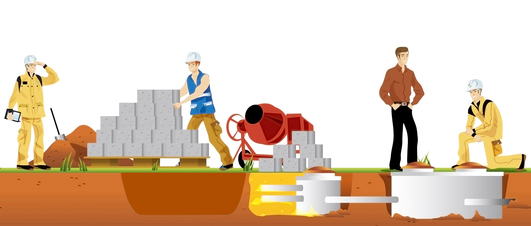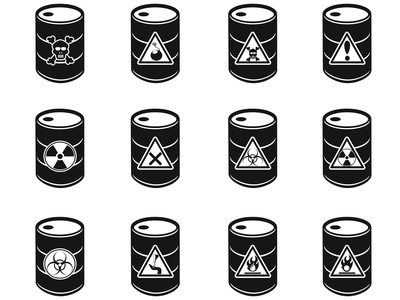It is possible that workers may come into contact with compressed gasses, oxidizing materials or flammable material. By law, any drums, bottles or other containers that have such materials must be affixed with WHMIS labels. In Canada, there are two types of labels, and either may be acceptable depending on where they are applied.
Workplace Hazardous Materials Information System Have Four Distinct Looks
There are six classes of hazardous materials that must be identified when either made or shipped to Canada. Each label must have specific information about the hazardous material as well as a universal symbol to indicate what is inside.
For instance, oxidizing materials are class C, and there is a circle with a flame rising from it. A class D1 material is considered to be a material that could cause serious toxic effects. It has a skull and crossbones on it.
How Workplace Labels Differ From Supplier Labels
A workplace label may be created and used when a supplier label is worn or is otherwise illegible. Unlike supplier labels that have to be created according to the law, there are no set standards for a workplace label. However, they will generally use the same symbols and words to clearly identify both that a material may be harmful and why it may be harmful to a worker.
Why Are These Labels Important?
Hazardous material labels are important because a worker or anyone handling a material during shipping could get hurt if not prepared. Toxic materials could eat through the skin or cause irritations that may lead to pain and other effects for months or years to come. In some cases, injuries suffered through contact or exposure to dangerous chemicals could last forever. In the event that a material constitutes a biohazard, it could create a community wide health issue if it is released outside of its controlled environment.
Employers Should Follow Health Codes to the Letter
Employers should aim to keep their workers safe at all times whether or not it is against the law not to. An injured worker equates to lost productivity as well as thousands of dollars in medical costs. Furthermore, it could lead to increased scrutiny from the government as well as from local or national media. The last thing an employer needs is to be known as one that doesn’t worry about its workers or the community.
Occupational safety is not something that should be seen as optional. Workers must know what they are handling at all times and be given the tools to do so safely. While labels are a great way to improve communication in the workplace, other tools like gloves and googles can cut down on accidents on the job.











